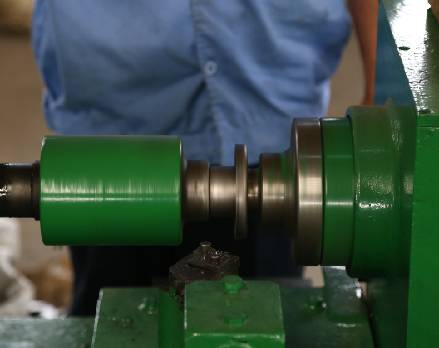 Afrikaans
Afrikaans  Albanian
Albanian  Amharic
Amharic  Arabic
Arabic  Armenian
Armenian  Azerbaijani
Azerbaijani  Basque
Basque  Belarusian
Belarusian  Bengali
Bengali  Bosnian
Bosnian  Bulgarian
Bulgarian  Catalan
Catalan  Cebuano
Cebuano  Corsican
Corsican  Croatian
Croatian  Czech
Czech  Danish
Danish  Dutch
Dutch  English
English  Esperanto
Esperanto  Estonian
Estonian  Finnish
Finnish  French
French  Frisian
Frisian  Galician
Galician  Georgian
Georgian  German
German  Greek
Greek  Gujarati
Gujarati  Haitian Creole
Haitian Creole  hausa
hausa  hawaiian
hawaiian  Hebrew
Hebrew  Hindi
Hindi  Miao
Miao  Hungarian
Hungarian  Icelandic
Icelandic  igbo
igbo  Indonesian
Indonesian  irish
irish  Italian
Italian  Japanese
Japanese  Javanese
Javanese  Kannada
Kannada  kazakh
kazakh  Khmer
Khmer  Rwandese
Rwandese  Korean
Korean  Kurdish
Kurdish  Kyrgyz
Kyrgyz  Lao
Lao  Latin
Latin  Latvian
Latvian  Lithuanian
Lithuanian  Luxembourgish
Luxembourgish  Macedonian
Macedonian  Malgashi
Malgashi  Malay
Malay  Malayalam
Malayalam  Maltese
Maltese  Maori
Maori  Marathi
Marathi  Mongolian
Mongolian  Myanmar
Myanmar  Nepali
Nepali  Norwegian
Norwegian  Norwegian
Norwegian  Occitan
Occitan  Pashto
Pashto  Persian
Persian  Polish
Polish  Portuguese
Portuguese  Punjabi
Punjabi  Romanian
Romanian  Russian
Russian  Samoan
Samoan  Scottish Gaelic
Scottish Gaelic  Serbian
Serbian  Sesotho
Sesotho  Shona
Shona  Sindhi
Sindhi  Sinhala
Sinhala  Slovak
Slovak  Slovenian
Slovenian  Somali
Somali  Spanish
Spanish  Sundanese
Sundanese  Swahili
Swahili  Swedish
Swedish  Tagalog
Tagalog  Tajik
Tajik  Tamil
Tamil  Tatar
Tatar  Telugu
Telugu  Thai
Thai  Turkish
Turkish  Turkmen
Turkmen  Ukrainian
Ukrainian  Urdu
Urdu  Uighur
Uighur  Uzbek
Uzbek  Vietnamese
Vietnamese  Welsh
Welsh  Bantu
Bantu  Yiddish
Yiddish  Yoruba
Yoruba  Zulu
Zulu Head Pulley Functionality and Importance in Conveyor Systems
Head Pulley in Conveyor Systems An Integral Component for Efficiency
The head pulley is a critical component in conveyor systems, serving as the driving force that facilitates the movement of materials in various industries, including mining, manufacturing, and distribution. Understanding its function and design is essential for optimizing conveyor performance and enhancing operational efficiency.
Head Pulley in Conveyor Systems An Integral Component for Efficiency
One of the key aspects of the head pulley is its design. Typically made from durable materials such as steel or aluminum, the head pulley is engineered to withstand significant stresses and resist wear over time. It can be manufactured in various diameters and widths to suit specific conveyor applications. Additionally, the surface of the head pulley is often coated with rubber or other friction-enhancing materials to increase grip between the pulley and the belt, preventing slippage and ensuring smooth operation.
head pulley in conveyor

Proper alignment and tensioning of the head pulley are also vital for optimal conveyor performance. When the head pulley is misaligned or improperly tensioned, it can lead to excessive wear on both the pulley and the belt, resulting in costly downtime and maintenance. Regular inspections are therefore necessary to ensure that the head pulley remains in alignment and that the belt tension is within the recommended specifications.
In addition to its functional attributes, the head pulley can also be equipped with various accessories to enhance its performance. For instance, a magnetic head pulley can be integrated into a conveyor system to separate ferrous materials from non-ferrous ones, thus improving the sorting efficiency of recycled materials. Furthermore, adjustable pulleys can allow for changes in belt tension and tracking, providing greater flexibility in operations.
In conclusion, the head pulley is an indispensable element in conveyor systems, ensuring that materials are transported efficiently and reliably. Its robust design, proper alignment, and potential for enhancement through various accessories make it a cornerstone of effective material handling practices. By understanding the significance of the head pulley, industries can achieve higher productivity and reduce operational costs, ultimately leading to greater success in a competitive marketplace.
-
Revolutionizing Conveyor Reliability with Advanced Rubber Lagging PulleysNewsJul.22,2025
-
Powering Precision and Durability with Expert Manufacturers of Conveyor ComponentsNewsJul.22,2025
-
Optimizing Conveyor Systems with Advanced Conveyor AccessoriesNewsJul.22,2025
-
Maximize Conveyor Efficiency with Quality Conveyor Idler PulleysNewsJul.22,2025
-
Future-Proof Your Conveyor System with High-Performance Polyurethane RollerNewsJul.22,2025
-
Driving Efficiency Forward with Quality Idlers and RollersNewsJul.22,2025





























